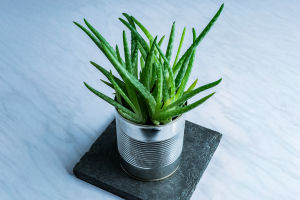The Vital Role of Plants
Imagine a world without plants. No towering trees, no lush green grass, no vibrant flowers. Sounds unimaginable, right?
Plants are often taken for granted, but they are absolutely essential to the survival of life on Earth. From providing food and oxygen to supporting ecosystems, plants are the foundation of life on this planet. So, what would happen if they suddenly disappeared?
It's not just a hypothetical question. The absence of plants would trigger a catastrophic chain of events that would affect every living organism, including humans. Let's break down how the disappearance of plants would alter the balance of life.
Loss of Oxygen and Increased Carbon Dioxide
Plants are our planet's primary producers of oxygen. Through photosynthesis, plants take in carbon dioxide (CO2) and release oxygen (O2) into the atmosphere. Without plants, there would be no natural way to replenish the oxygen we depend on to breathe.
1. Oxygen Levels Would Plummet: Without plants, the oxygen supply would dwindle. This would lead to a gradual depletion of breathable air for all oxygen-dependent life forms. In just a few weeks, the oxygen content in the atmosphere could drop dramatically.
2. Carbon Dioxide Would Skyrocket: In addition to producing oxygen, plants absorb carbon dioxide, a harmful greenhouse gas. Without plants to help regulate this balance, carbon dioxide would accumulate in the atmosphere, leading to an increase in the greenhouse effect. This would accelerate global warming, causing severe climate changes.
Disrupted Food Chains
Plants are at the base of virtually every food chain on Earth. They are the primary producers, meaning they create the energy that sustains nearly all other life forms. Without plants, herbivores would have nothing to eat, which would quickly affect the carnivores that rely on them.
1. Loss of Food for Herbivores: Animals that feed on plants, like cows, rabbits, and deer, would starve. These herbivores are crucial for the diets of many carnivores, so the disappearance of plants would lead to a collapse in the population of animals higher up the food chain.
2. The Collapse of Ecosystems: Animals are not the only ones affected. Many insects, which are vital for pollination and the overall health of ecosystems, rely on plants for food. Without plants, pollinators like bees would have no food source, further disrupting ecosystems and the production of crops.
Climate and Weather Chaos
Plants play a critical role in stabilizing the climate and weather patterns. They help regulate temperature, manage water cycles, and prevent soil erosion. Without them, the environment would quickly become hostile to life.
1. Increased Temperature: Plants absorb sunlight and provide shade, helping to keep temperatures in check. Without this natural cooling system, the Earth would heat up more rapidly, leading to scorching heatwaves and increased evaporation of water sources.
2. More Severe Weather Events: Plants play a role in maintaining the water cycle. Forests and wetlands absorb and release water into the atmosphere, which regulates rainfall patterns. Without plants, rainfall would become more erratic and extreme, leading to both severe droughts and floods.
Soil Erosion and Loss of Fertility
Plants help hold the soil together with their root systems. Without plants, the topsoil would easily be washed away by rain and wind, leading to widespread soil erosion.
1. Desertification: As plants disappear, soil erosion would increase dramatically. This would lead to the loss of fertile soil, turning once-arable land into barren deserts. This process, known as desertification, would destroy farmlands, making it nearly impossible to grow food.
2. Loss of Habitats for Wildlife: The loss of plant life would result in the destruction of habitats for countless species. Trees, shrubs, grasses, and other plants provide shelter for a wide variety of animals. Without them, many species would lose their homes, causing massive declines in biodiversity.
Economic Impact
The disappearance of plants would have devastating effects on the global economy. Agriculture, forestry, and tourism are all industries that depend heavily on plants.
1. Collapse of Agriculture: Crops such as wheat, rice, and corn would cease to exist without plants. This would result in a massive food shortage, leading to famine and economic collapse in many regions. Even livestock farming would become impossible without plants for animals to graze.
2. Loss of Natural Resources: Forests provide wood for construction, paper products, and various other materials. Without trees, industries that rely on these resources would crumble, leaving millions without jobs. The tourism industry, which thrives on scenic landscapes and forests, would also be severely impacted.
Human Survival at Risk
As the primary source of oxygen and food, plants are fundamental to human survival. If plants were to disappear, it's not just wildlife that would be in danger — humans would be as well.
1. Global Food Crisis: The immediate effect would be food scarcity. Without plants to produce crops, humanity would face a global food crisis. The world's population relies on plant-based foods for nutrition, and without them, survival would become increasingly difficult.
2. Health Impacts: The lack of oxygen and the increase in pollutants and carbon dioxide would cause widespread health problems. Breathing difficulties, heat-related illnesses, and respiratory diseases would become common, and ultimately, humanity could struggle to survive.
Conclusion: A Plantless Future is Unthinkable
The disappearance of plants would spell disaster for every living thing on Earth. From a collapse in food chains and ecosystems to devastating impacts on climate and human survival, the absence of plants would trigger a series of catastrophic events that would make life unsustainable.
Plants are far more than just pretty decorations in our gardens — they are the lifeblood of our planet. Our very existence depends on their survival. The thought of a world without them is not just frightening; it's unthinkable. So, let's cherish and protect the green wonders that make life on Earth possible.


